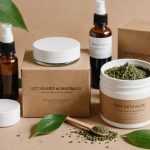Understanding Oily Skin
Oily skin is a common skin type characterised by an overproduction of sebum by the sebaceous glands. These glands are responsible for producing the natural oils that help keep the skin lubricated and protected. However, when the sebaceous glands are overactive, they produce excess oil, leading to shiny skin and potentially clogged pores.
The main causes of oily skin include genetics, hormonal changes, and age. For instance, conditions like puberty can trigger hormonal fluctuations, causing the sebaceous glands to produce more oil. Additionally, environmental factors and diet can influence how much oil the skin produces. Although it’s widely believed that oily skin should be thoroughly washed to strip away the oil, this is a misconception. Over-cleansing can stimulate the sebaceous glands to produce even more oil, exacerbating the problem.
Have you seen this : How to Perfect Your Skincare Regimen Amidst the UK’s Wild Weather Swings
Furthermore, not all oils are bad. It’s crucial to recognise that sebum is vital for skin health, providing a natural barrier against environmental damage. By understanding the function of sebaceous glands and correcting misconceptions, individuals with oily skin can better manage their skin types and create a balanced skincare regimen.
Daily Skincare Routine for Oily Skin
Creating a suitable skincare routine for oily skin is essential to maintain a balanced complexion. Start with a gentle yet effective cleanser specifically designed for oily skin. Such cleansers should remove excess oil without stripping the skin of its natural moisture. Look for options containing salicylic acid or benzoyl peroxide, known for their ability to combat oil and potential breakouts.
Topic to read : Ultimate guide to glowing skin: key strategies for effectively using retinol
After cleansing, incorporating an effective toner can help restore the skin’s pH balance and control shine. Alcohol-free toners with ingredients like witch hazel or green tea extract can refresh the skin without over-drying it. This step is crucial in managing oily skin as it adds a layer of protection against environmental factors.
Moisturising might seem counterintuitive for oily skin types, but it’s a necessary step. Choose light, oil-free moisturisers that are non-comedogenic to avoid clogging pores. Gels or water-based formulations can hydrate the skin effectively without contributing to additional oiliness.
Incorporating these elements into a daily skincare routine helps maintain skin health, manage oil production, and prevent future breakouts. Consistency and choosing the right products are key to achieving a balanced and clear complexion.
Product Recommendations
Choosing the right skincare products for oily skin can significantly enhance its appearance and health. Opting for oil-free and non-comedogenic options is a key strategy. These products help prevent pore blockage and reduce excess shine.
Best Cleansers for Oily Skin
When selecting a cleanser, focus on those specifically formulated to manage oil production without stripping natural moisture. Look for ingredients like salicylic acid or clay, designed to remove impurities without over-drying. These cleansers work by capturing oil and debris, reducing the potential for breakouts.
Top Toners and Exfoliants
Incorporating a toner that balances oil levels is essential. Choose alcohol-free toners with non-comedogenic elements like witch hazel to refresh and soothe the skin. Exfoliation should also be part of the routine, aiming for gentle exfoliants that help remove dead skin cells, promoting a clearer complexion.
Moisturisers and Sunscreens Suitable for Oily Skin
Moisturisers play a crucial role; select lightweight, oil-free formulations that hydrate without causing greasiness. Sunscreen is vital too, with non-comedogenic options that protect against UV without adding shine. Test new products to ensure personal compatibility, adapting as needed to maintain a balanced and radiant skin.
Makeup Tips for a Radiant Look
Achieving a beautiful, long-lasting look with oily skin can be challenging, but with the right techniques, it’s entirely possible. Start by selecting a foundation specifically designed for oily skin. Oil-free, mattifying foundations help minimize excess shine while providing a smooth base. For application, use a sponge or a stippling brush to press the foundation gently into the skin, promoting a seamless appearance.
Setting sprays and powders are indispensable for managing oil control throughout the day. A light dusting of translucent powder can lock your foundation in place, reducing the risk of breakouts. Alternatively, setting sprays can create a matte finish and extend the wear of your makeup.
When applying makeup, focus on techniques that help maintain a fresh appearance. Pat contours and highlights carefully to avoid disrupting the base layer. If you find oil building up, blotting papers are a quick and efficient way to absorb excess oil without ruining your makeup.
By carefully choosing products and mastering these techniques, you’ll achieve a radiantly fresh look that lasts. Prioritize oil control to ensure your makeup stays vibrant and consistent, enhancing your natural beauty.
Lifestyle Changes to Combat Oily Skin
Implementing lifestyle changes can play a crucial role in managing oily skin effectively. The food you eat directly impacts your skin, so focusing on a balanced diet can help regulate oil production. Consuming foods rich in omega-3 fatty acids, like fish and seeds, can be beneficial, while reducing intake of processed and sugary foods.
Staying adequately hydrated is essential for maintaining overall skin health. Although it might seem counterintuitive, drinking plenty of water helps your skin stay supple and can even reduce excess oil by maintaining internal hydration levels.
Moreover, managing stress is critical in controlling skin oiliness. Stress can trigger hormone fluctuations, increasing oil production. Incorporating stress-reduction techniques such as yoga, meditation, and regular exercise can significantly help. These activities not only decrease stress levels but also promote better circulation, contributing to healthier skin.
By making thoughtful adjustments to your lifestyle, you can manage oil production and keep your skin looking its best. Emphasising a balanced diet, staying hydrated, and effectively managing stress are foundational steps that can contribute to a clearer, more balanced complexion over time.
The Role of Professional Treatments
Professional skincare treatments can significantly enhance the management of oily skin, offering targeted solutions that are often more effective than over-the-counter products. Such treatments include regular facials and chemical peels, which help control excess oil and improve overall skin texture.
Facials tailored for oily skin typically focus on deep cleansing and exfoliation, removing impurities that clog pores. These sessions might use products rich in salicylic acid or clay based masks, known for their oil-absorbing properties. By incorporating facials into your routine, you can achieve clearer skin and reduce the frequency of breakouts.
Chemical peels, another professional option, use alpha or beta hydroxy acids to exfoliate the skin at a deeper level. This treatment not only unclogs pores but also helps even out skin tone by removing dead skin cells that contribute to dullness. Regular peels can lead to smoother skin with reduced oiliness.
For persistent oily skin problems or if considering treatments like microdermabrasion, consult a dermatologist. These professionals can assess your skin’s needs, recommend appropriate treatments, and provide guidance on managing oily skin effectively for the long term. Seeking expert advice ensures that treatments are suitable and beneficial for your specific skin type.
Long-term Maintenance Strategies
Maintaining healthy oily skin requires a strategic approach, particularly when dealing with seasonal changes. Adjusting your skincare routine to account for variations in humidity and temperature can make a significant difference. In winter, opt for lighter products since the skin might produce less oil, while summer might necessitate more oil-control measures.
It’s essential to monitor skin conditions regularly and tweak your regimen to suit its evolving needs. If you notice increased dryness, incorporate hydrating serums without adding richness, such as those containing hyaluronic acid. For increased oiliness, ensure continued use of non-comedogenic products to avoid pore blockage.
Consider developing a sustainable daily regimen that prioritises light, yet effective, skincare tips. This might involve using gel-based cleansers and regularly updating products to suit your skin’s current requirements. Remember, consistency is crucial; keep a close record of what works and what doesn’t.
By being proactive and observant about these changes and integrating them into your routine adjustments, you’ll help sustain balanced, healthy skin over time. An adaptable routine ensures your skin remains in great condition, empowering it to handle environmental challenges effortlessly.











